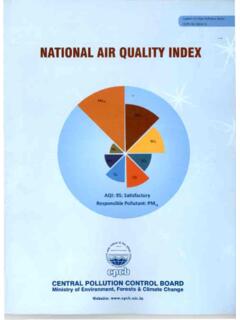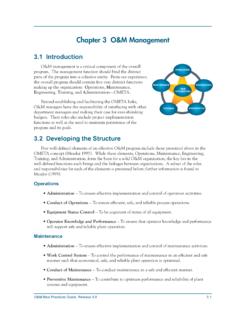Transcription of NATIONAL STANDARDS FOR BLOOD TRANSFUSION …
1 NATIONAL STANDARDS FOR BLOOD TRANSFUSION SERVICEE dition 1-2013 BLOOD Safety Program, Health Care and Diagnostic Division Department of Medical Services Ministry of HealthThimphu: BhutanNational STANDARDS for BLOOD TRANSFUSION Service 20132 NATIONAL STANDARDS for BLOOD TRANSFUSION Service/2013 NATIONAL STANDARDS for BLOOD TRANSFUSION Service 2013 NATIONAL STANDARDS for BLOOD TRANSFUSION Service 20132 NATIONAL STANDARDS for BLOOD TRANSFUSION Service/20131 NATIONAL STANDARDS for BLOOD TRANSFUSION Service/2013 FOREWORDM inistry of Health over a period of time has been focusing on consolidation of health care services by improving quality, enhancing sustainability, improving accessibility and strengthening human resource development and on the principle of delivering quality health care services.
2 The BLOOD Safety Program under the Department of Medical Services has developed a manual on NATIONAL STANDARDS for BLOOD TRANSFUSION Service based on Good Manufacturing Practices (GMP) with objective to maintain and enhance the quality and safety of BLOOD TRANSFUSION in the health facilities. The STANDARDS address the entire low risk population; selection of donor, BLOOD collection; testing/screening services, equipment, reagents, and human resources. The efforts of the program are commended and appreciated since this standard has come at a critical juncture where our efforts are geared towards providing quality health care adhering to BLOOD TRANSFUSION STANDARDS I would urge all health care providers to make use of this and other clinical STANDARDS , guidelines, standard operating procedures, handbook on universal precaution, etc.
3 , while delivering services to the clients. Your little bit of extra efforts will definitely go a long way in improving health care services to our quest is to improve quality of health care services to the people of Bhutan. I wish all health family members TASHI DELEK in our common endeavour.(DR. UGEN DOPHU) Director GeneralNational STANDARDS for BLOOD TRANSFUSION Service 20132 NATIONAL STANDARDS for BLOOD TRANSFUSION Service/2013 PREFACEB lood TRANSFUSION is a life saving intervention that has an essential role in the total patient management within health care delivery. It is therefore important that the health authority takes appropriate and adequate measures to ensure that the BLOOD banks in the country have the basic requirements in terms of human and financial re-sources and the necessary infrastructure and other support to provide service in accordance with the set STANDARDS .
4 For better adherence to the STANDARDS , special areas to focus on are self-sufficiency in BLOOD and BLOOD products, based on voluntary non-remunerated BLOOD donation; continued medical education of all the health personnel involved in the BLOOD TRANSFUSION chain; periodic auditing of BLOOD banks and development of quality management system in the BLOOD TRANSFUSION in mind the guiding principle of consistency, the manual on NATIONAL STANDARDS for BLOOD TRANSFUSION Service has been prepared on the basis of Good Laboratory Practice and Good Manufacturing Practice, with the objective of ensuring quality and safety of BLOOD and BLOOD products in the face of known and emerging threats to public health in the country. The STANDARDS address the entire TRANSFUSION chain from donor to recipient, encompassing the selection of BLOOD donors from low-risk population, safe BLOOD collection, testing of donated BLOOD for TRANSFUSION transmissible infections and BLOOD group serology, preparation, storage, issue and transportation of BLOOD components for appropriate clinical use and lastly safe administration of BLOOD to the recipients.
5 In this document, the technical STANDARDS appear at the beginning followed by quality requirements for processes and procedures carried out in a center s day to day operations. Some terms are specifically designed for the purpose of these STANDARDS . The term SHALL is used to indicate a mandatory statement and describes the single acceptable activity or term SHOULD is used to indicate a commonly accepted activity which may have an effective alternative that can be used also. A glossary is included in the manual for the purpose of defining terms to reflect their usage in the context of these STANDARDS for BLOOD TRANSFUSION Service 2013 NATIONAL STANDARDS for BLOOD TRANSFUSION Service 20132 NATIONAL STANDARDS for BLOOD TRANSFUSION Service/20133 NATIONAL STANDARDS for BLOOD TRANSFUSION Service/2013 REFERENCES While preparing the document guidance has been taken from:1.
6 STANDARDS on BLOOD banks/ BLOOD centers and TRANSFUSION Services, 1st edition 2007, NABH, India2. WHO Recommendations on Basic Requirements for BLOOD TRANSFUSION Services, WHO/ advanced draft3. AABB STANDARDS for BLOOD Banks and TRANSFUSION Services, 21st edition4. Manual on the management, maintenance and use of the BLOOD cold chain equipment, WHO, Geneva, Framework for standard of practice and service STANDARDS developed by QASD, Ministry of HealthDr Mahrukh Getshen, TRANSFUSION Medicine Specialist, BLOOD Bank JDW, NATIONAL Referral Hospital, Thimphu. NATIONAL STANDARDS for BLOOD TRANSFUSION Service 20134 NATIONAL STANDARDS for BLOOD TRANSFUSION Service/2013 ACKNOWLEDGEMENTSB lood Safety Program, Ministry of Health would like to appreciate and thank the valuable contributions and the hard work put in by the technical experts, laboratory specialists and personnel from the NATIONAL , regional and district health facilities, health officials from Quality Assurance and Standardization Division, Drug Vaccine and Equipment Division in the ministry and also to officials from Bhutan Medical And Health Council and Drug Regulatory Ministry of Health would like to specially acknowledge Dr Nani Nair, WHO Representative, Country office, Bhutan, Dr Neelam Dhingra.
7 Co-ordinator, BLOOD Safety, WHO/ Geneva, Dr Rajesh Bhatia, Director, Department of Communicable Diseases, WHO/SEARO, and Dr Zarin Bharucha, WHO-Short Term Consultant for providing valuable special thanks to our financial partner OFID -OPEC Fund for International Development for supporting the printing of this STANDARDS for BLOOD TRANSFUSION Service 2013 NATIONAL STANDARDS for BLOOD TRANSFUSION Service 20134 NATIONAL STANDARDS for BLOOD TRANSFUSION Service/20135 NATIONAL STANDARDS for BLOOD TRANSFUSION Service/2013 TABLE OF CONTENTSPAGE 6-9 Acronyms9-10 chapter 1 Introduction12-13 chapter 2 Code of ethics for BLOOD donation and transfusion14-15 chapter 3 The BLOOD donor16-23 chapter 4 Testing of donated blood24-25 chapter 5 BLOOD and BLOOD components26-27 chapter 6 Clinical use of BLOOD and BLOOD component28-29 chapter 7 Quality System30-39 chapter 8 Waste
8 Management in BLOOD TRANSFUSION service40-42 AnnexureProcess flowAnnex 1 Donor questionnaire and consent formAnnex 2 Donor deferralAnnex 3 BLOOD request formAnnex 4 Informed consent form for TRANSFUSION of BLOOD & BLOOD componentsAnnex 5 BLOOD TRANSFUSION reportAnnex 6 TRANSFUSION reaction formAnnex 7 ATransfusion reaction investigation formAnnex 7 BOrganogram of BLOOD TRANSFUSION ServiceAnnex 8 NATIONAL BLOOD TRANSFUSION CommitteeAnnex 9 NATIONAL BLOOD TRANSFUSION ServiceAnnex 10 NATIONAL BLOOD CenterAnnex 11 Regional BLOOD CenterAnnex 12 BLOOD storage centerAnnex 13 Standard tests at centersAnnex 14 Basic equipment at centersAnnex 15 Basic reagents at centersAnnex 16 Equipment recordAnnex 17 Standard Operating ProceduresAnnex 18 Equipment specificationsAnnex 19 Reagents specificationsAnnex 20 NATIONAL STANDARDS for BLOOD TRANSFUSION Service 20136 NATIONAL STANDARDS for BLOOD TRANSFUSION Service/2013 GLOSSARYA utologous BLOOD : The BLOOD drawn from the patient/recipient for re- TRANSFUSION into him /her at later : Procedure whereby whole BLOOD is separated by physical means into components and one or more of them returned to the : Human BLOOD drawn from a donor and mixed with center: A facility or centre that performs all the following functions.
9 Recruiting BLOOD donors Screening and selecting BLOOD donors BLOOD collection Testing, and processing of BLOOD units Transportation, receiving, and storage of BLOOD units Pre- TRANSFUSION tests on patients BLOOD samples Issue of BLOOD or BLOOD components for clinical transfusionBlood storage center: A center that is involved in the following functions only: Receiving and storing screened BLOOD and BLOOD components from another authorized BLOOD establishment Performing compatibility tests BLOOD issue for transfusionBlood component: Any therapeutic constituent of BLOOD that is separated by physical or mechanical means ( red cells, platelets, plasma). It is not intended to capture plasma derived collection: A procedure whereby a single donation of BLOOD is collected in an anticoagulant product: Any therapeutic substance derived from human BLOOD , including whole BLOOD , BLOOD components and plasma derived : To set measurement of equipment against a known Significant Antibody: Any allogenic or autologous antibody that is capable of producing a significant adverse reaction to transfused BLOOD or System.
10 A system for collecting and processing BLOOD in containers that have been connected together by the manufacturer before sterilization, so that there is no possibility of bacterial or viral contamination from outside after collection of BLOOD from the STANDARDS for BLOOD TRANSFUSION Service 2013 NATIONAL STANDARDS for BLOOD TRANSFUSION Service 20136 NATIONAL STANDARDS for BLOOD TRANSFUSION Service/20137 NATIONAL STANDARDS for BLOOD TRANSFUSION Service/2013 Corrective Action: An activity performed to eliminate the cause of an existing nonconformance, or other undesirable situation in order to prevent : Ability of an individual to perform a specific task according to standard : Fulfillment of requirements as defined by : Capable of affecting (noun): Written or electronically generated information involved in providing a product or service.













